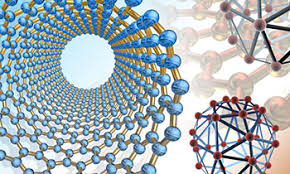Mechanical and Materials Engineering, Department of
Document Type
Article
Date of this Version
2011
Citation
Exp Eye Res. 2011 January ; 92(1): 57–66.
Abstract
Aqueous humour transport across the inner wall endothelium of Schlemm’s canal likely involves flow through giant vacuoles and pores, but the mechanics of how these structures form and how they influence the regulation of intraocular pressure (IOP) are not well understood. In this study, we developed an in vitro model of giant vacuole formation in human Schlemm’s canal endothelial cells (HSCECs) perfused in the basal-to-apical direction (i.e., the direction that flow crosses the inner wall in vivo) under controlled pressure drops (2 or 6 mmHg). The system was mounted on a confocal microscope for time-lapse en face imaging, and cells were stained with calcein, a fluorescent vital dye. At the onset of perfusion, elliptical void regions appeared within an otherwise uniformly stained cytoplasm, and 3-dimensional reconstructions revealed that these voids were dome-like outpouchings of the cell to form giant vacuole-like structures or GVLs that reproduced the classic “signet ring” appearance of true giant vacuoles. Increasing pressure drop from 2 to 6 mmHg increased GVL height (14 ± 4 vs. 21 ± 7 μm, p < 0.0001) and endothelial hydraulic conductivity (1.15 ± 0.04 vs. 2.11 ± 0.49 μL min−1 mmHg−1 cm−2; p < 0.001), but there was significant variability in the GVL response to pressure between cell lines isolated from different donors. During perfusion, GVLs were observed “migrating” and agglomerating about the cell layer and often collapsed despite maintaining the same pressure drop. GVL formation was also observed in human umbilical vein and porcine aortic endothelial cells, suggesting that giant vacuole formation is not a unique property of Schlemm’s canal cells. However, in these other cell types, GVLs were rarely observed “migrating” or contracting during perfusion, suggesting that Schlemm’s canal endothelial cells may be better adapted to withstand basal-to-apical directed pressure gradients. In conclusion, we have established an in vitro model system to study giant vacuole dynamics, and we have demonstrated that this system reproduces key aspects of giant vacuole morphology and behaviour. This model offers promising opportunities to investigate the role of endothelial cell biomechanics in the regulation of intraocular pressure in normal and glaucomatous eyes.
Included in
Mechanics of Materials Commons, Nanoscience and Nanotechnology Commons, Other Engineering Science and Materials Commons, Other Mechanical Engineering Commons



Comments
Copyright 2011 Elsevier
doi:10.1016/j.exer.2010.11.003.